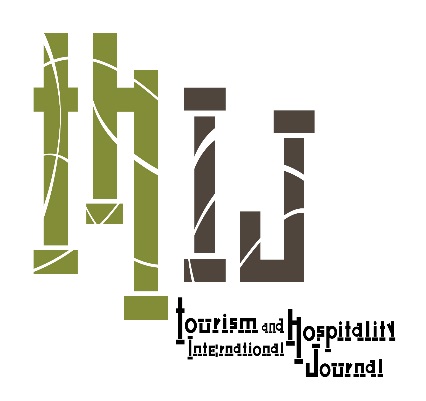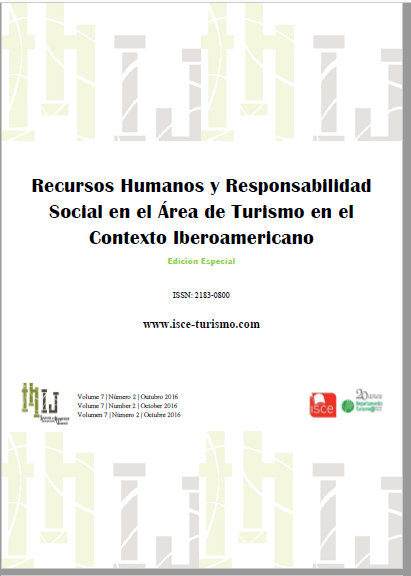The Black Coast Shrimp Festival in Acaraú and Gastronomic Tourism: An analysis of the event
DOI:
https://doi.org/10.57883/thij7(2)2016.30336Keywords:
Tourism, Gastronomy, Shrimp farming, Commercial valueAbstract
The municipalities of Acaraú, Itarema, Cruz and Jericoacoara, which are inserted in the Valley of Acaraú in the State of Ceará, make up the so-called "black coast". The high protein content in this region enabled the cultivation of shrimp in captivity with a higher quality. According to the organizers, the festival aims to promote the region, develop it commercially and highlight its gastronomy and tourist potential. The big gain with the festival is to link the quality of locally produced shrimp to the national and world cuisine. The study aimed to evaluate the festival, and check if it has fulfilled its goal. The research approach is qualitative and the methodological procedure is bibliographical and exploratory. The main results were evaluated taking into account the scope of the proposed targets. The evaluation study concluded that the event has contributed to the improvement of commercial value, the divulgation of the product, and the industry's recovery.
References
Associação Brasileira dos Criadores de Camarão. (2014). Website oficial. http://issuu.com/marineumarocha/docs/revista_abcc
Associação Brasileira dos Criadores de Camarão. (2015). Website oficial. http://www.abccam.com.br/site/
Bezerra, E. (2011). Costa Negra. Fortaleza, CE: Author.
Brasil, H. (2007). Turismo, saúde e desenvolvimento humano. São Paulo, CE: Eca/USP.
Bueno, S. L. S. (1990). Maturation and spawning of the white shrimp Penaeus schmitti Burkenroad, 1936, under large scale rearing conditions. Journal of the World Aquaculture Society, 21(3), 170-179.
Coriolano, L. (2012). Turismo, território e conflitos imobiliários. Fortaleza, CE: EdUECE.
Igarashi, M. (2002). Situação atual da carcinicultura e o status econômico-social da atividade no Nordeste, 33(2), 277-287. Fortaleza, CE: [s.n.].
Milagres, V., Costa, R., & Gomes, S. (2015). Planejamento operacional da gastronomia como fator de valorização da identidade regional no Brasil, 2-14. Fortaleza, CE: [s.n.].
Moura, C. A. F. (2005). Dumping na carcinicultura brasileira: Uma análise dos impactos socioeconômicos da acusação norte americana. (Dissertação de Mestrado). Universidade Federal de Pernambuco, Recife, PE.
Rocha, I. de P. (2011). Carcinicultura brasileira: Processos tecnológicos, impactos socioeconômicos, sustentabilidade ambiental, entraves e oportunidades, 1-10. http://issuu.com/panaceia6/docs/revista_abcc_janeiro_de_2011_9dfa31a64c09d7.
Sampaio, y., Costa, E. F., Albuquerque, E., & Sampaio, B. R. (2003). Impactos sócio-econômicos do cultivo do camarão marinho em municípios selecionados do nordeste brasileir. http://www.abccam.com.br/site/.
Saraiva, A., Porto, C., & Brasil, E. (2015). Festas como bens culturais e turísticos: Festivais de Música Nativista e Rodeios Crioulos, 2-13. Fortaleza, CE: [s.n.].
Serviço de Apoio a Pequena e Média Empresa. (2014). Website oficial. http://segmentos.sebrae2014.com.br/ideiasdenegocios/criacao-de-camarao/?id=5959&t=4/wp-admin/install.php
Tribe, J. (2003). A economia do lazer e do turismo. São Paulo, SP: Manole.
VI Festival Internacional do Camarão da Costa Negra. (2014). http://www.festivaldocamaraoaccn.com.br/festival/
Ximenes, L., Vidal, M., & Feitosa, R. (2015). Informe Rural Etene. Ano Recuperação da Carcinicultura Nordestina Pós-crise, 1-7. Fortaleza, CE: [s.n.].
Downloads
Published
How to Cite
Issue
Section
License
Copyright (c) 2023 This work is licensed under a Creative Commons - Attribution 4.0 International (CC BY 4.0)

This work is licensed under a Creative Commons Attribution 4.0 International License.
This work is published under the Creative Commons Attribution 4.0 International License.






